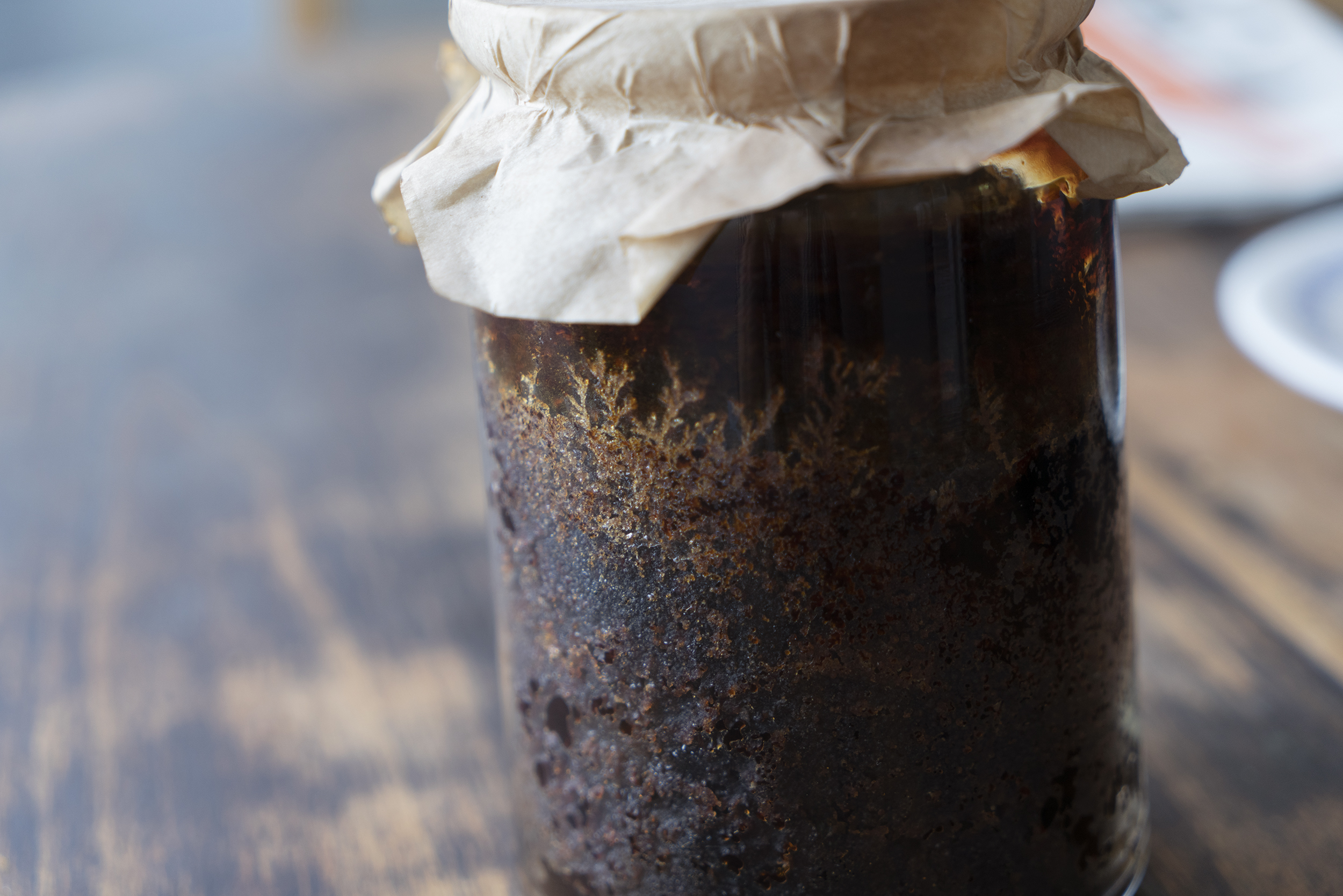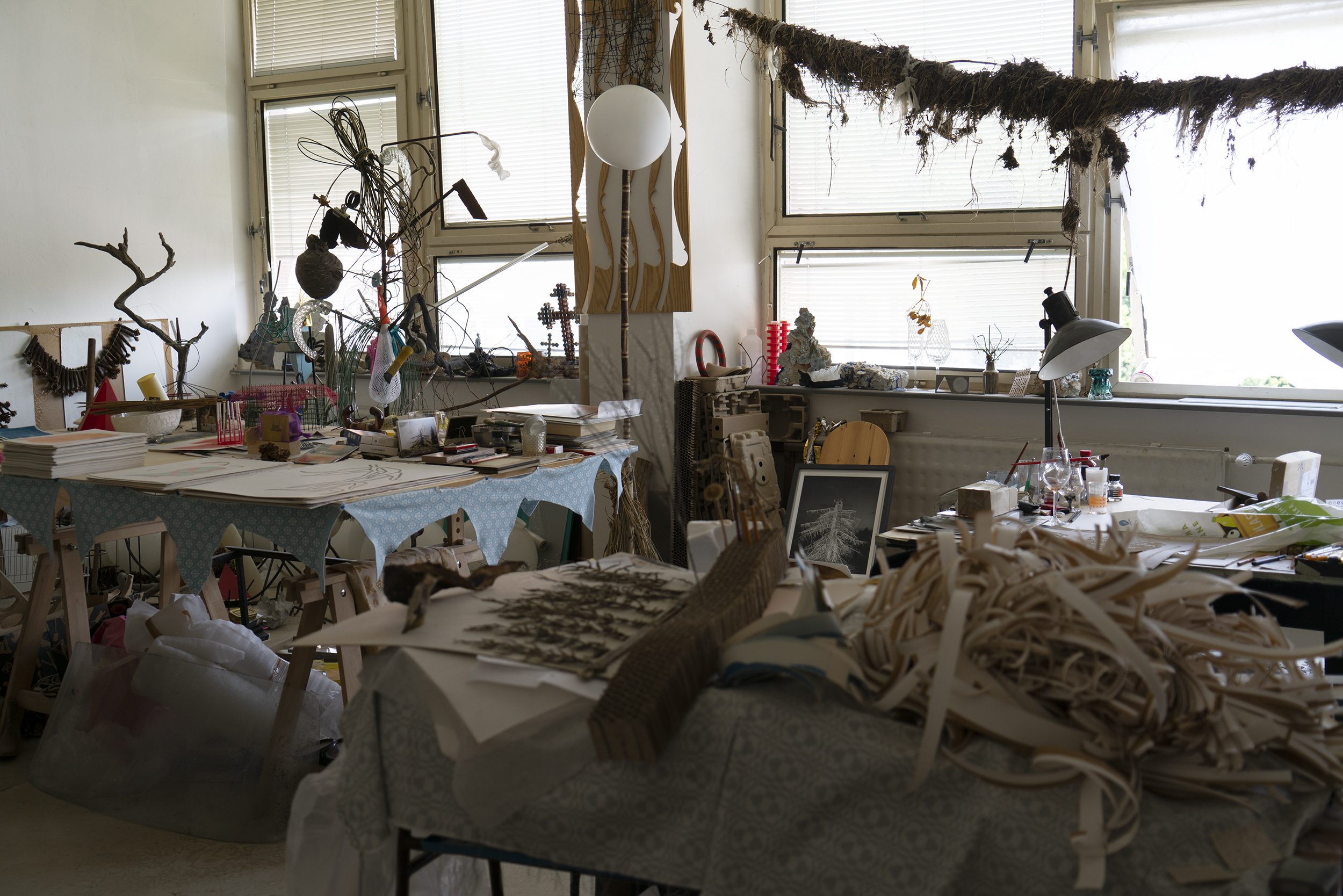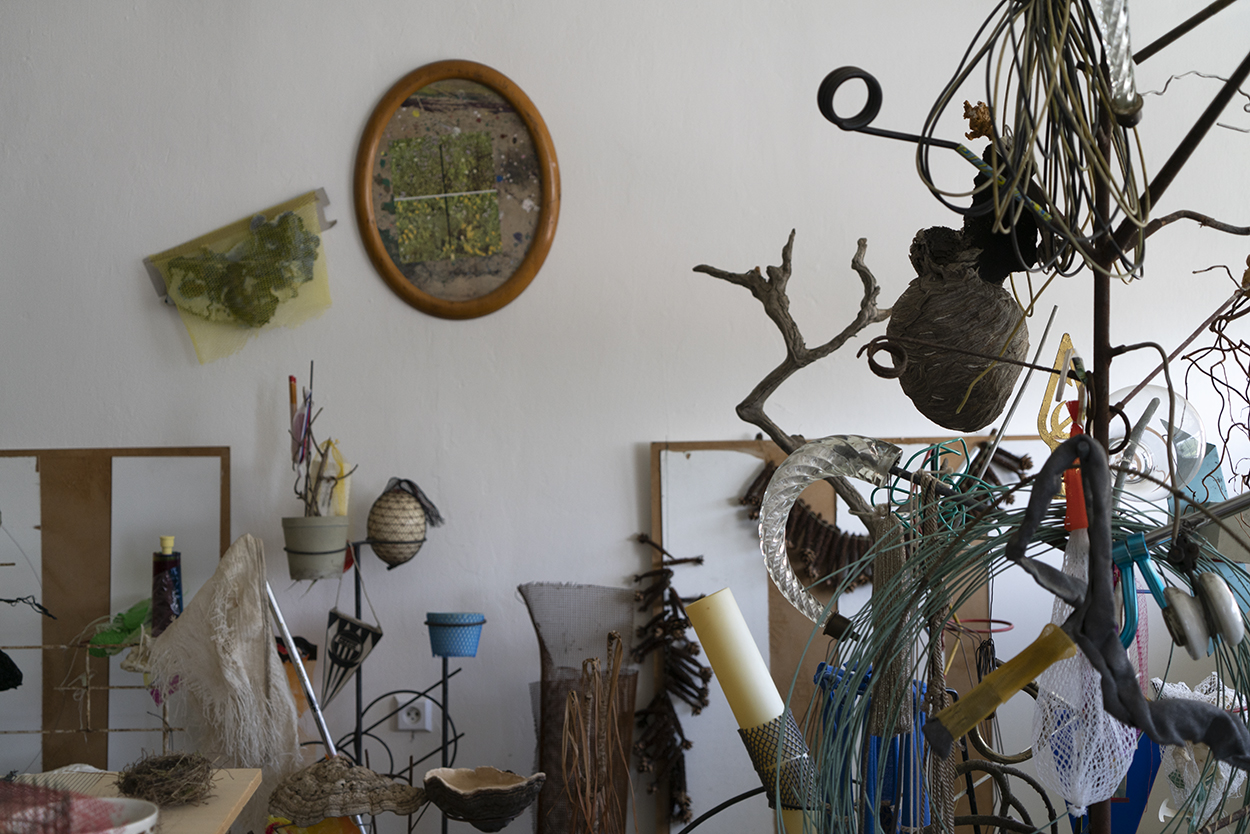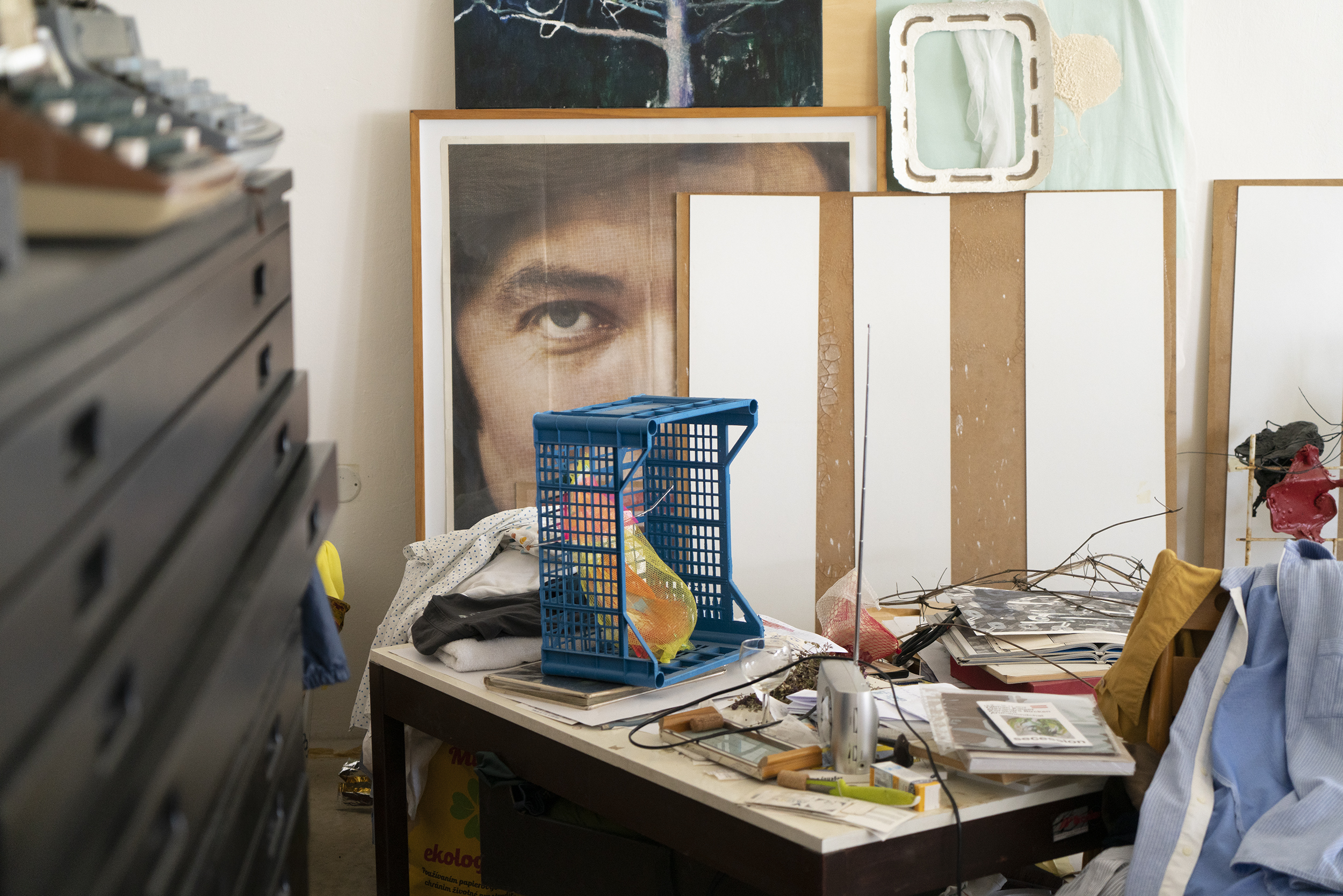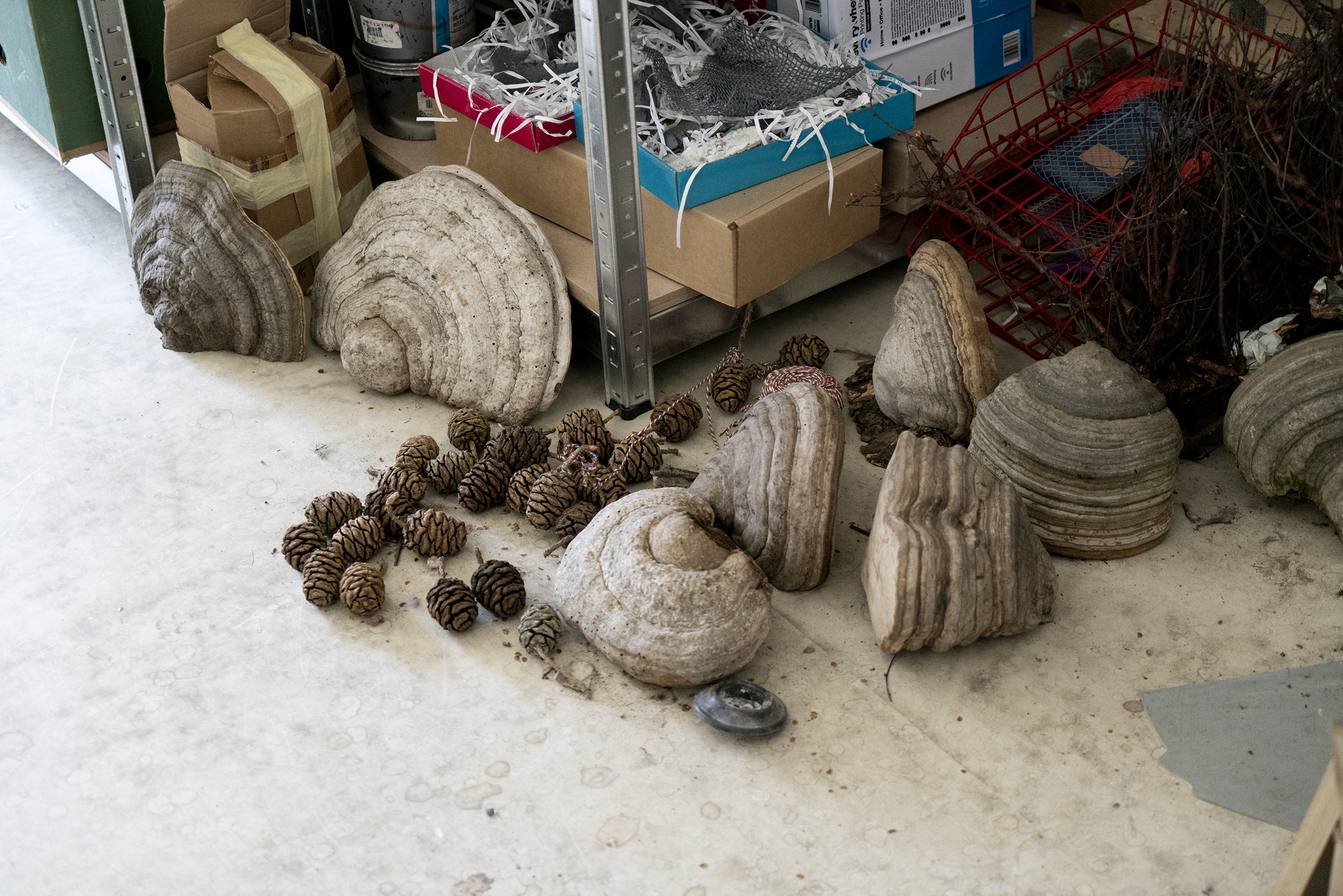Close Things / SVÄTOPLUK MIKYTA
Autobiography in a jam
We are in Banská Štiavnica, in the space of BANSKÁ ST A NICA in the school building, where the cultural centre moved from the local railway station in 2018. “We could start in my studio, where I’d like to say a few words of introduction”, Svätopluk begins. He opens the door and we enter a cabinet of curiosities, a universe of personal fascinations – although capturing the atmosphere of this space in words is difficult, it can only be experienced. This is possible at least once a year during the Open Studio Day in Banská Štiavnica, which is organised by the BSC.
What does collecting mean to you?
Collecting is quite an important part of my life and work, I like to surround myself with found things, often used and broken, with an unknown past. I’m also interested in different materials. It’s really hard to choose one thing that I have a relationship with, each one has a story. I look at most of these objects as an embryo of a future work. Of those favorite recent additions, I would pick this necklace from the The Last Amazonian Congress, for example, made from “bites” of pine cones I found under a spruce tree in Polana – squirrels had used and discarded them before me.
Right next to it I have a rectangular root from a Tatra rhododendron found during a walk, an iron I found in a meadow in Ilija, probably deformed by a tractor mower, or a compact, forty-centimeter wasp nest that came right out of this building. I also like this salt, which is from the feeder, licked by the fawns into a particular sculptural shape – it’s already a finished, beautiful object.
I rarely collect memorabilia. I’m always more interested in things that I’m thinking of using in the context of making art. For example, the root is interesting to me because of its shape; I didn’t pick it up as a memory of a place, a nice hike. Rather, I imagine that I could use it in an installation at some point.
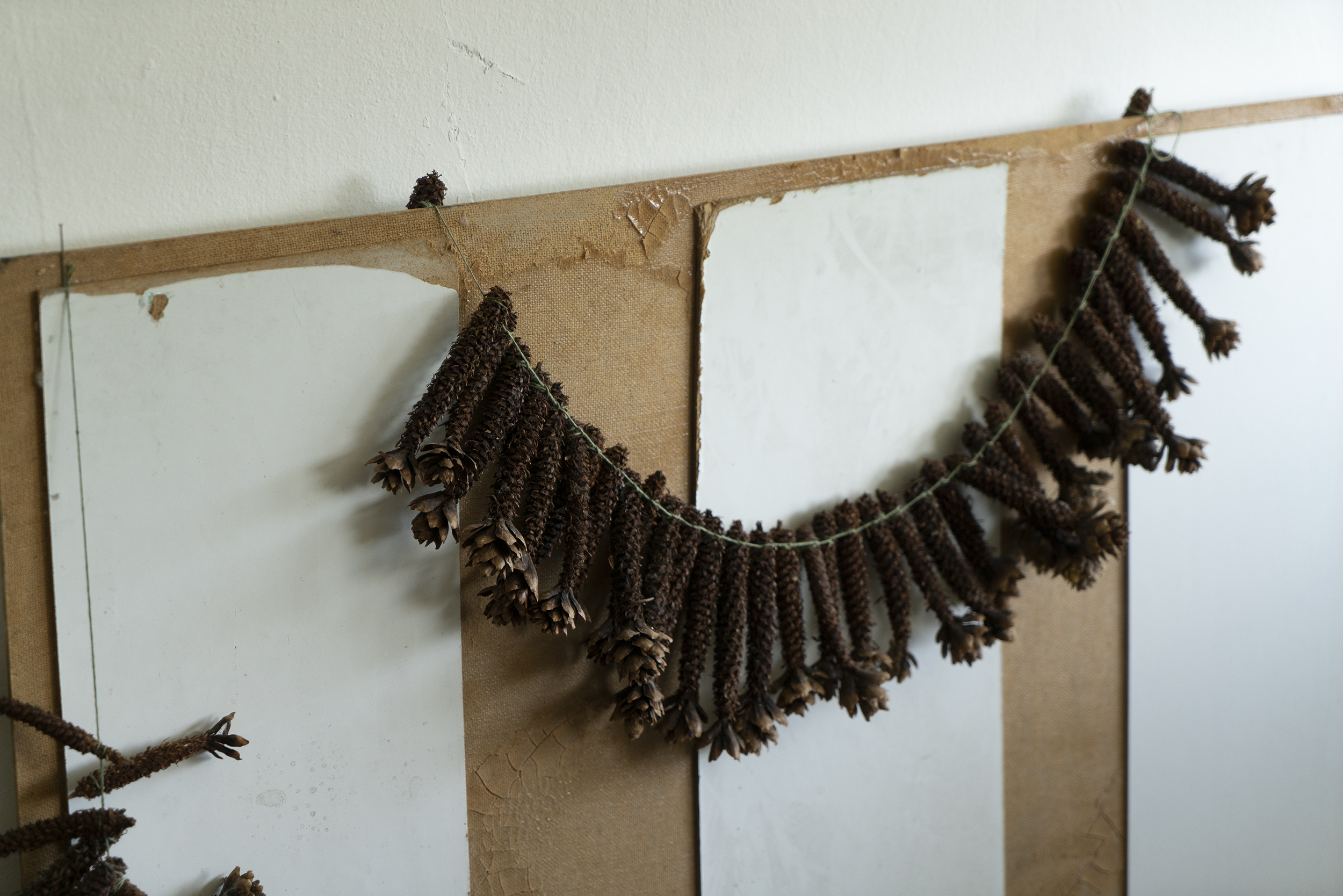
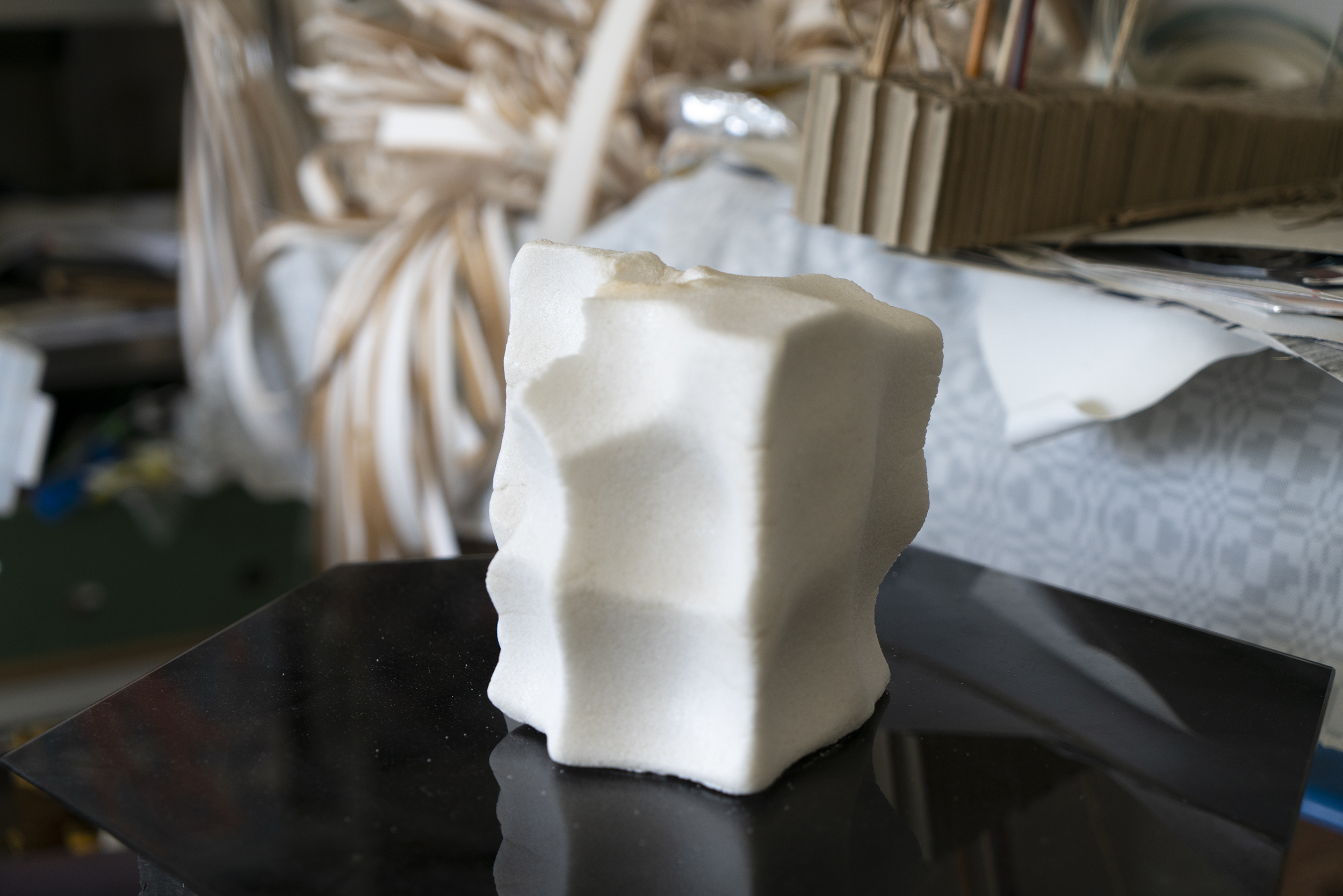 I personally perceive two categories of collectors – one has a systematic approach to collecting, pursuing some cultural or financial value, focusing on specific types of artifacts, forming a homogeneous collection. And then there are the non-systematic ones, which I would include you in, whose motivations are quite different. Their criterion for selecting objects is visual appeal, a certain strangeness, a subjective fascination with the material or the story…
I personally perceive two categories of collectors – one has a systematic approach to collecting, pursuing some cultural or financial value, focusing on specific types of artifacts, forming a homogeneous collection. And then there are the non-systematic ones, which I would include you in, whose motivations are quite different. Their criterion for selecting objects is visual appeal, a certain strangeness, a subjective fascination with the material or the story…
For me, this collecting and looking for things now takes on an even different dimension. I feel that for me there is a certain departure in the way I create at the moment. I’m moving away from creating an artefact to somewhere else. In my repaints I used to use old books or photographs that I had interfered with – it was a form of recycling. That’s intensifying now. I’ve acquired a sense that I shouldn’t actually make the work, but rather just discover it and move on. And that way it can be given a new, contemporary narrative – to operate in a different context. That’s what occupies me at the moment; to make art, but without that authorial egoism: this is me, the artist, the genius, and these are the works I make. I’m tempted to approach the creation from a different side.
Do you have artists close to you who work with a similar principle?
A lot of artists use found objects in their work, but we all follow different lines, a specific aesthetic, materiality, or something else that connects those things to make them work. I was very connected to Michal Moravčík in that way. Even though his aesthetic was completely different, it was based on what was collected, what was around the containers in the housing estate, and that also determined the character of his work. I’m collecting at the moment in the countryside in nature.
What close thing did you choose for the occasion?
It’s homemade plum jam from 1973, preserved in a handmade glass jar. I found it while cleaning out an attic here in Štiavnica. Apart from some functional, practical things like furniture, I was, as always, looking for those special things. I was already attracted to this jam as an object – its analogue purity, simplicity, still handmade glass and paper cap. And then I read the year on the label dating: 1973 – the year I was born. Of course, I immediately connected the dots, thinking that I was holding a preserved parallel to my life. Both Jam and I have been in the world for the same length of time. It’s basically a very simple, banal thing, but at the same time it’s an object, a material that has some potential, actually offers a very special awareness of our time, our being in the world. And it’s from that primal moment that when I came into the world, somebody was making this jam. I was born in July, the jam is from August – the plums were already ripening. The label still says “mama”. That dark brown crystalline mass inside is still in some process, but I think it’s still okay, edible. It’s an organic time capsule from the harvest of the seventy-third year from a particular place. That’s what interests me about found objects: working with the fact that they contain.
And this object is very special for me – it is procedural, it contains the matter, the food. Actually, it’s a bit out of place among the other things in my collection. And maybe that’s why I chose it. It’s possible that the jam will be here longer than I will…(laughs).


